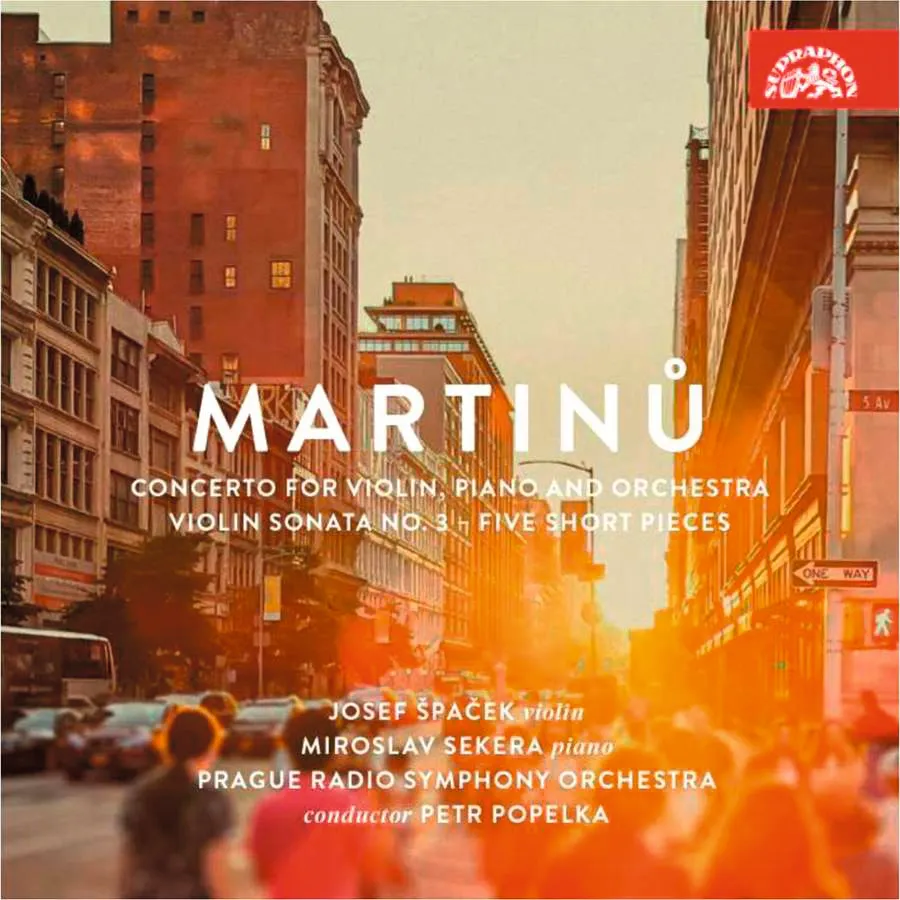
Martinů Concerto for Violin, Piano and Orchestra*; Violin Sonata No. 3; Five Short Pieces Josef Špaček (violin), Miroslav Sekera (piano), *Prague Radio Symphony Orchestra/Petr Popelka Supraphon SU43302 63:02 mins
Bohuslav Martinů’s own instrument was the violin – in the early 1920s he was a member of the Czech Philharmonic – and he composed several major works for it, including two numbered concertos. Among other works featuring violin and orchestra, one of the most immediately appealing is the Concerto for Violin, Piano and Orchestra, written in 1953 towards the end of his sojourn in the United States and an exhilarating piece that is by turns optimistic and bittersweet. These key ingredients of Martinů’s music come framed here with elements of the concerto grosso style that he frequently exploited during his neo-classical phase, and in this performance the outer movements are full of the driven energy that implies. The central Adagio is rapturous, but even in the agitated finale the soloists Josef Špaček and Miroslav Sekera find delicacy at the heart of things.
Supraphon’s cover features a Manhattan street scene, and the other major work here also dates from Martinů’s American years. Again, though, we hear the unmistakable Czech spirit of the exiled composer: the Violin Sonata No. 3 (1944) is an imposing piece in four movements, echoing the symphonies he was writing around this time. Špaček and Sekera are virtuosic in the opening movement and searching in the Adagio. There’s a special piquancy in their Scherzo, and all these elements are combined in the finale, where Špaček’s violin tone has shining poise. The Five Short Pieces are characteristic of their time and place (1930, Paris) and more abrasive, running the stylistic gamut from Charleston to fugato.
John Allison